Concert halls are performance spaces that hold great significance in the culture of a region. They help facilitate a unique occurrence of showcasing talents in music and drama live. The energy and transient nature of these performances mean that a highly intense and invigorating experience is offered by these spaces. The stimulation of the senses is, thus, an essential aspect of these spaces, and for concert halls, acoustics are a quintessential part of the design.
Concert halls have detailed acoustic requirements to ensure that the performances are as immersive as possible. These spaces also tend to be visually impressive to elevate the performance and energy.
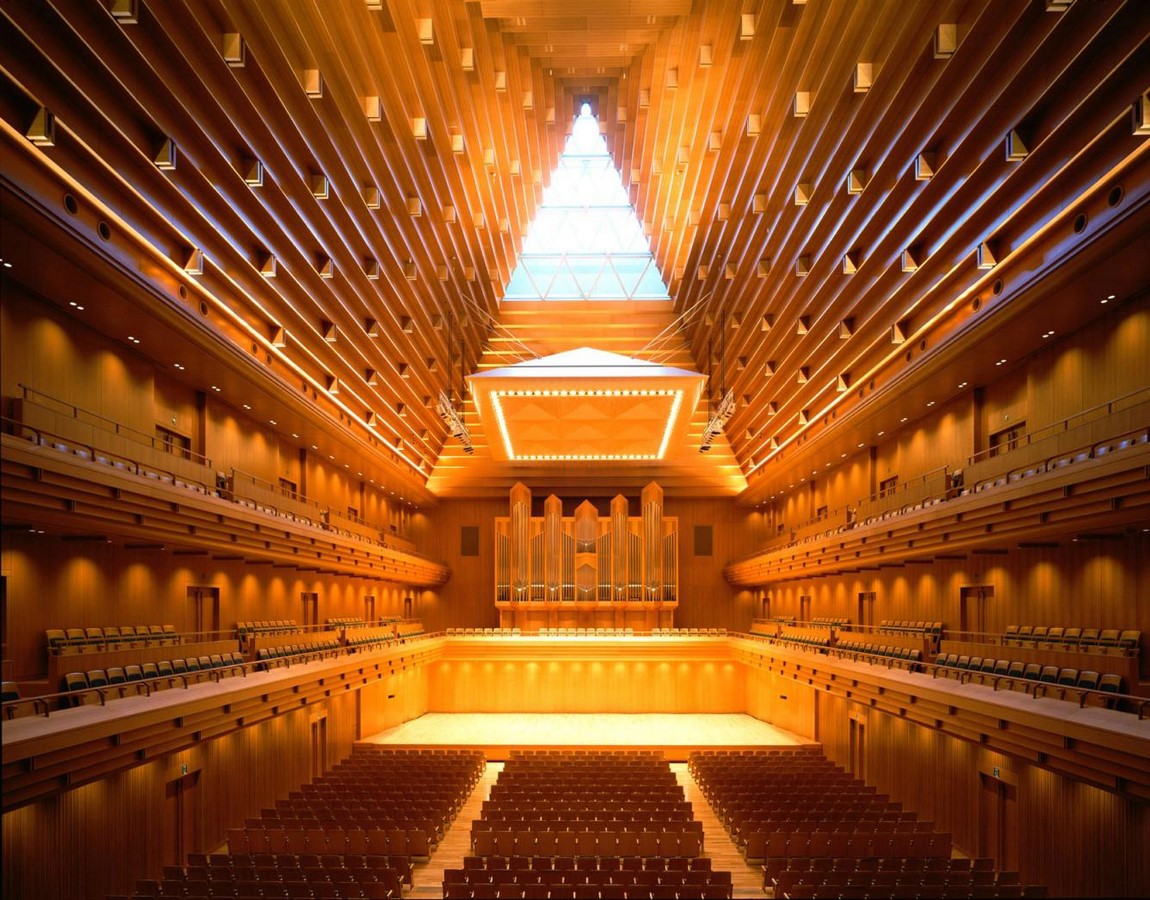
The Tokyo Opera City Concert Hall
Contained within the 54-floor tall Tokyo Opera City Tower is the Takemitsu Memorial Concert Hall, more commonly called the Tokyo Opera City Concert Hall. The hall opened in 1997 and, along with the New National Theater, is part of a cultural complex in Shinjuku, Tokyo. The Tower also holds a smaller Recital Room and smaller rehearsal rooms, and an Art Gallery. It was designed by Takahiko Yanagisawa of TAK Architects along with Dr. Leo L. Beranek, who was commissioned as the Acoustical Consultant.
Today, the Tokyo Opera City Concert Hall ranks sixth in the list of the world’s best Concert halls, due to its stunning visuals and acoustic conditions, which come together to create an unforgettable experience for both the performers and the audience. The hall is named after performer Toru Takemitsu, who was originally involved in the project as the musical consultant before his untimely demise before the hall was completed.
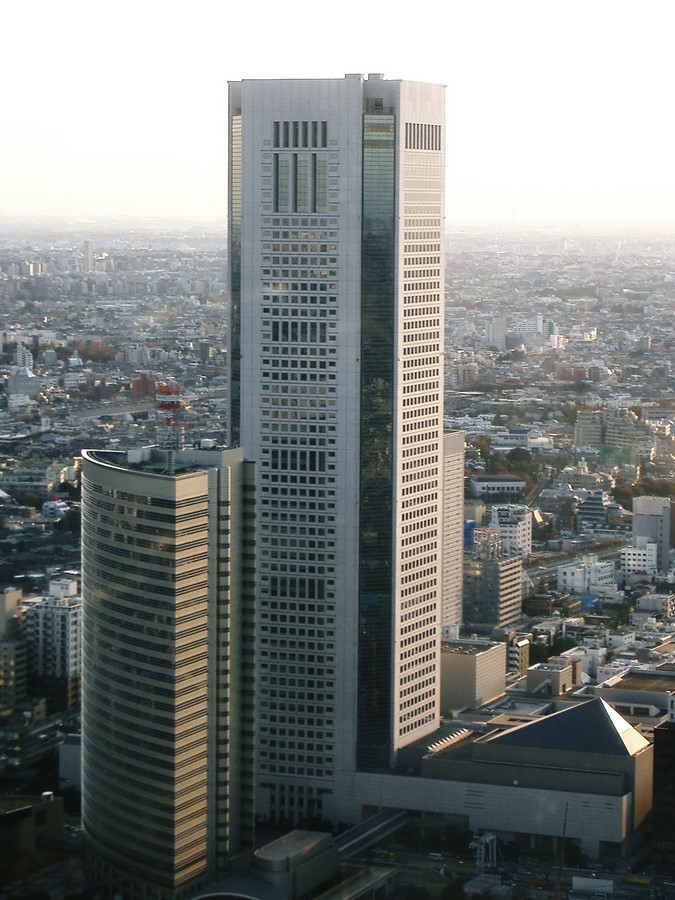
Architecture
In plan, the Tokyo Opera City Concert Hall is a narrow, 66 feet wide rectangular hall. The hall was designed in the shoebox style to promote more dynamic acoustics; however, the space is smaller than other examples of shoebox concert halls. The small area means that the volume is compensated vertically, resulting in a distorted pyramidal structure that extends up around 91 feet with wooden grooving.
The Tokyo Opera City hall is the first concert hall to feature a pyramidal vaulted ceiling, and to contain interiors entirely in wood. This was done to ensure uniform distribution of sound. Models and simulations over a period of five years helped in the careful calibration of this structure. Two long balconies run along the walls with additional seating. The more intimate floor area ensures a quicker, more distinct aural experience.
A massive pipe organ sits at the front of the hall at the first balcony level, and a triple-height foyer provides a transition space from the rest of the building to the hall. This space features tapestries by Christian Marclee, and a statue of Takemitsu in the center.
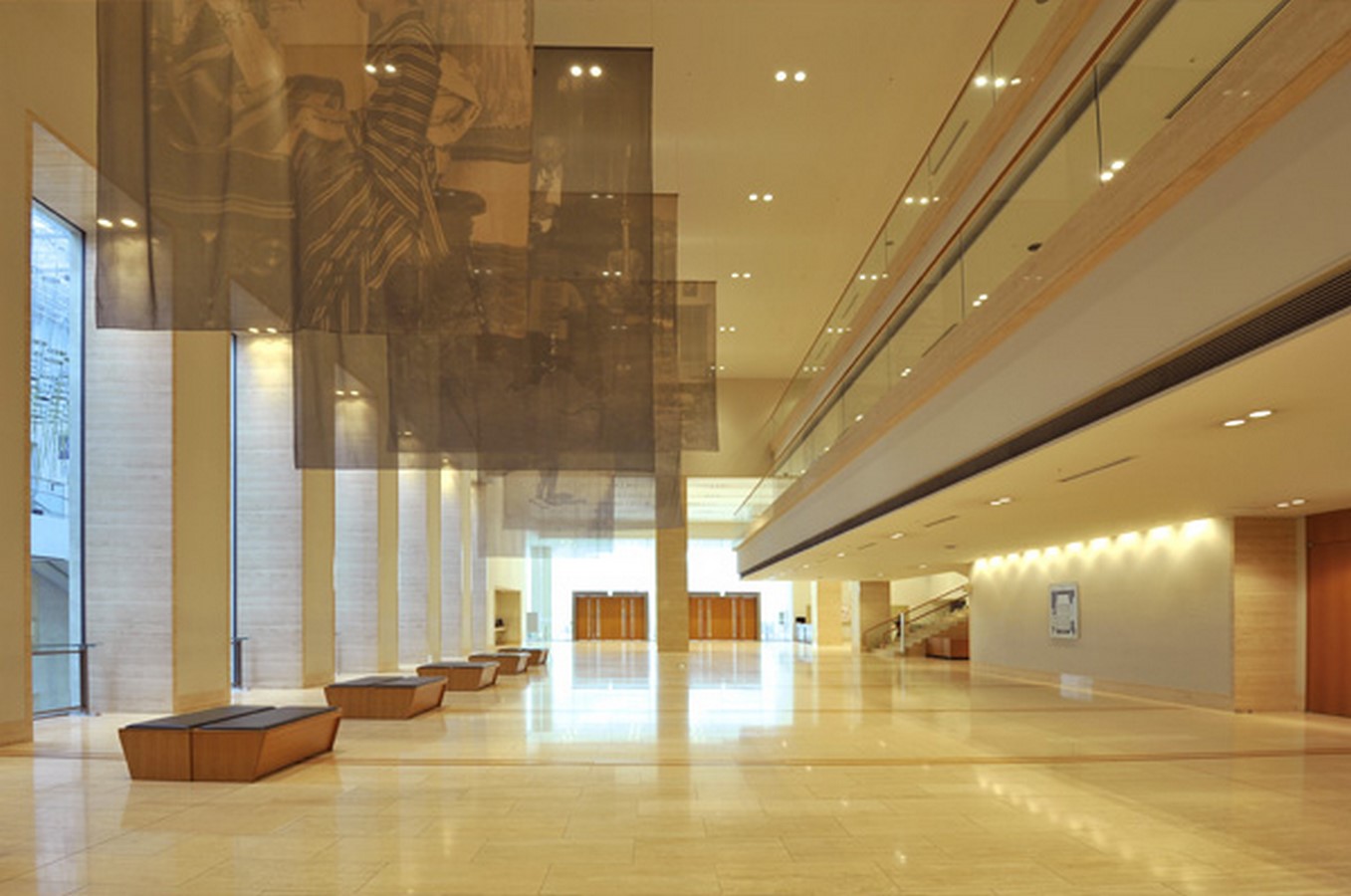
Designing for Acoustics
Rather than simply mimicking existing concert halls to provide good sound quality, the entire design of the Tokyo Opera City Concert Hall centers around the acoustic experience. Since sound clarity was so central to the design, many of the visual elements that make this building also act as essential aspects of sound control and redirection. The pyramidal form was carefully aligned and distorted to ensure a uniform distribution of sound.
Initially, a computer-assisted model of the design helped to map out the reflected sound path. Then, a model at a 10:1 scale was constructed. This wooden model helped to iron out any kinks in the sound distribution that remained after the computer simulation.
Finally, the architects invited an orchestra to rehearse in the space to ensure that no awkward pockets of sound remained. An even distribution of wooden blocks along the grooved ceiling blends aesthetics and adequate sound reflection.
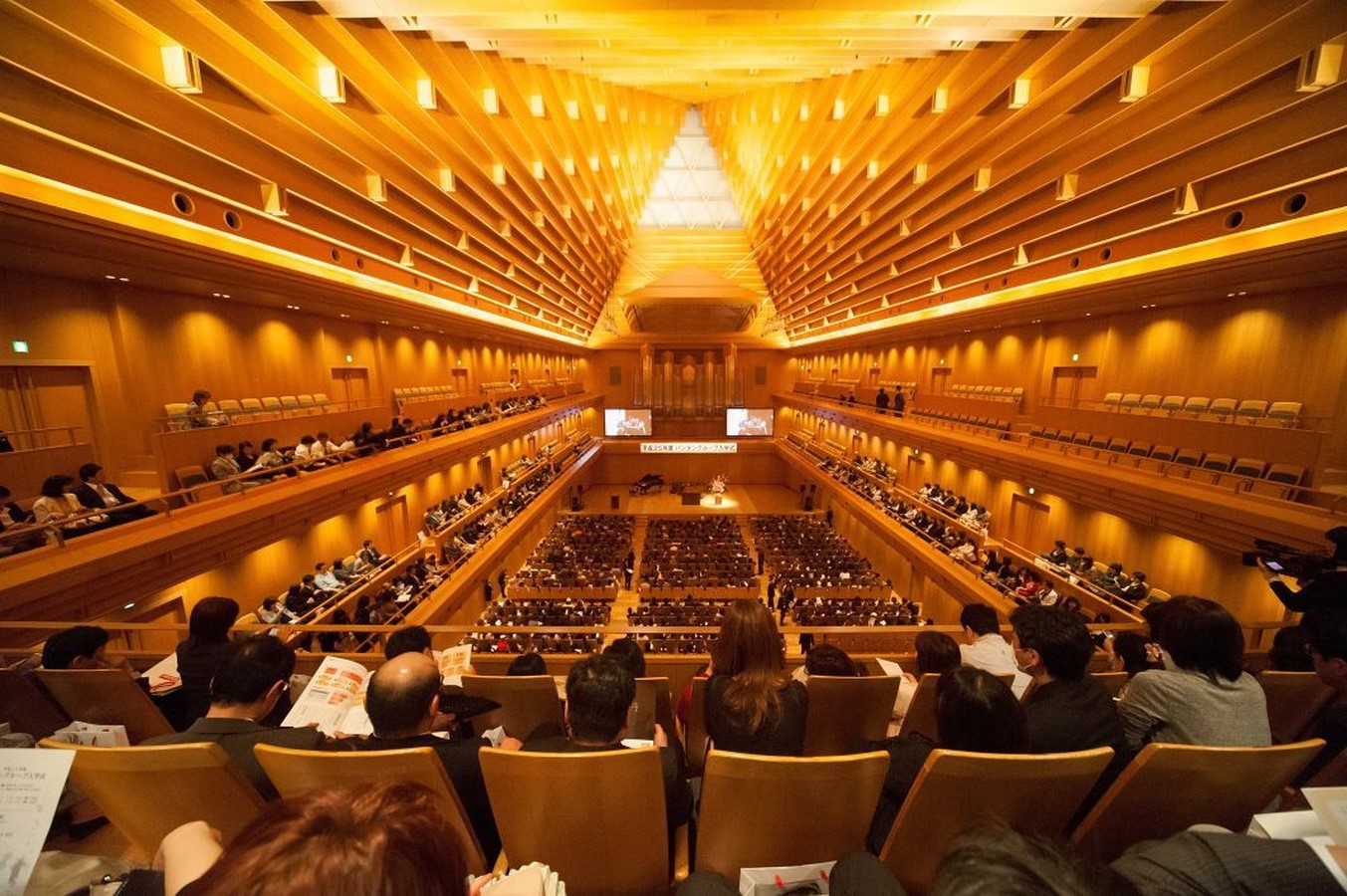
The interior of the Tokyo Opera City Concert Hall is entirely in white oak wood, despite restrictions on Tokyo public buildings. The architects had to get special permissions since wood allows to reduce reverberation and provides acoustic damping. The wood provides a striking contrast to the rest of the building, which is glass and concrete.
The result is a warm-toned space highlighted by lighting and windows. The grooves on the ceiling and the canopy above the stage are both carefully aligned and angled in order to produce a sound diffraction that mimics the acoustics of larger concert spaces.
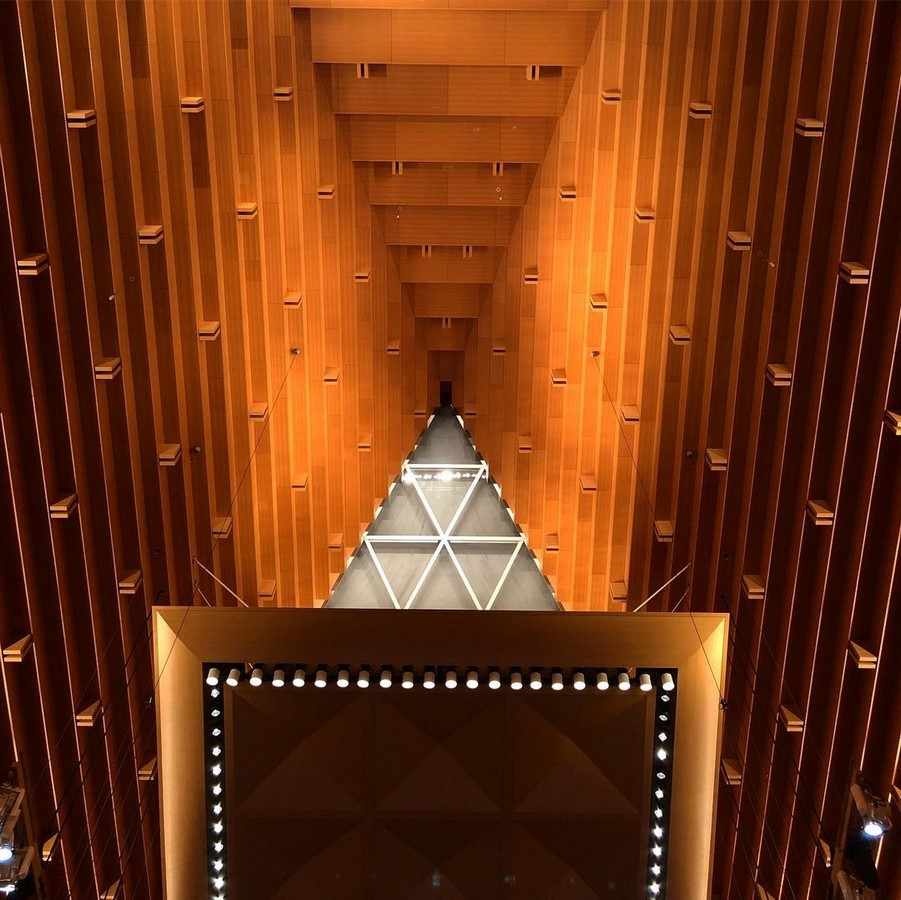
Impact on Society
The history of architectural acoustic design has always been contentious since it depends so much on the individual quirks of the project, rather than any true standardization. The Tokyo Opera City Concert Hall, however, along with the adjoining New National Theater, was created after a detailed analysis of a variety of successful halls. Aspects such as optimal reverberation time, sound damping, and diffusion were cataloged and compared to try and create the best combination.
The Tokyo Opera City hall is an embodiment of all the research done in the field of architectural acoustic design and has sparked future conversations about how to tackle sound and other sensory details in public spaces. The hall today is often used by the Tokyo Philharmonic Orchestra and the Tokyo Symphonic Orchestra. Multiple popular musicians have also performed here, such as cellist Yo-Yo Ma, and music critics universally appreciate the clarity and warmth of the sound within the space.
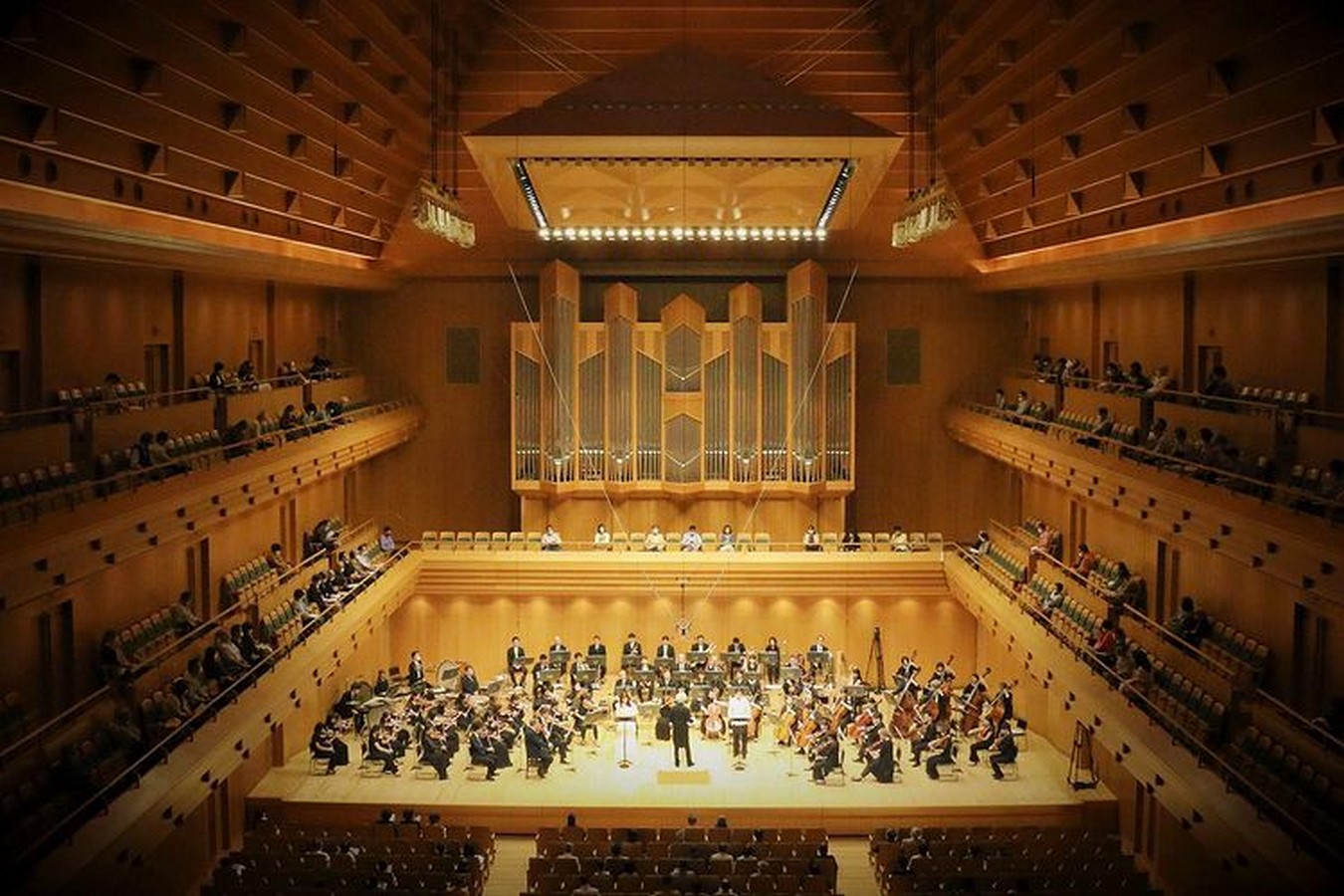
References
Beranek, L., 2004. Concert halls and opera houses. 2nd ed. New York: Springer, pp.411-415.
Glanz, J., 2000. Art + Physics = Beautiful Music (Published 2000). [online] Nytimes.com. Available at: <https://www.nytimes.com/2000/04/18/science/art-physics-beautiful-music.html>
Hidaka, T., Beranek, L., Masuda, S., Nishihara, N. and Okano, T., 2000. Acoustical design of the Tokyo Opera City (TOC) concert hall, Japan. The Journal of the Acoustical Society of America, 107(1), pp.340-354.
Medium. 2021. Architecture and Music: the 10 most beautiful Concert halls. [online] Available at:<https://medium.com/@HiddenHub/architecture-and-music-the-10-most-beautiful-concert-halls-b6c153aceeff>.
Tokyo Opera City Concert Hall. 2021. Facilities/Concert Hall. [online] Available at: <https://www.operacity.jp/en/concert/facilities/ch/>


















